zur deutschen Version, Flagge klicken oder tippen

- Republic of Trinidad and Tobago
- parliamentary republic
- consisting in the islands Trinidad and Tobago
- own name: Republic of Trinidad and Tobago
• Flags
• Historical Flags
• Meaning/Origin of the Flag
• Coat of Arms
• Meaning/Origin of the Coat of Arms
• Aircraft Roundel
• Map
• Numbers and Facts
• History
• Origin of the Country's Name

since 1962,
National and state flag,
ratio = 3:5,
Source, by: Flags of the World






Merchant flag and state flag at sea,
ratio = 1:2,
Source, by: Flags of the World



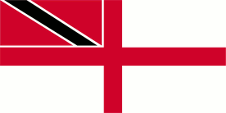
Naval flag,
ratio = 1:2,
Source, by: Flags of the World



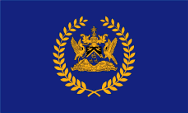
Flag ot the President,
ratio = 3:5,
Source, by: TriniPosseStar,
CC BY-SA 3.0, via Wikimedia Commons




Flag of the Prime Minister,
ratio = 3:5,
Source, by: Prez001,
CC BY-SA 3.0, via Wikimedia Commons




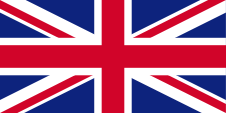
1889–1962,
Union Flag → quasi National flag,
Flag of United Kingdom,
ratio = 1:2,
Source: Wikipedia (EN)





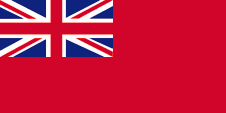
1889–1962,
Merchant flag,
ratio = 1:2,
Source, by: Flags of all Nations





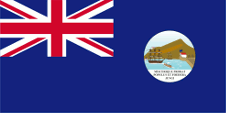
1889–1958,
Flag of the government (state flag),
ratio = 1:2,
Source, by: Flags of the World



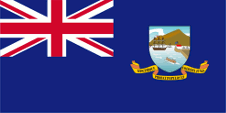
1958–1962,
Flag of the government (state flag),
ratio = 1:2,
Source, by: Flags of the World



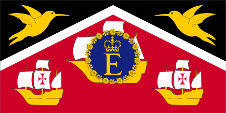
1962–1976,
Flag of the Queen,
ratio = 1:2,
Source, by:
Flags of the World



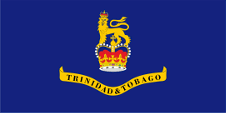
1962–1976,
Flag of the Governor General,
ratio = 1:2,
Source, by:
Flags of the World



Flags of Trinidad ← click here
Flags of Tobago ← click here

Federation of the West Indies (1958–1962):
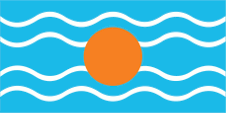
Flag of the Federation of the West Indies,
ratio = 1:2,
Source, by: Flags of the World



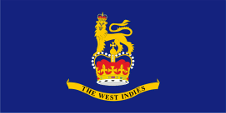
Flag of the Governor General,
ratio = 1:2,
Source, by:
Flags of the World




The flag of Trinidad and Tobago was adopted on 31st of August in 1962 on the
occasion of independence and hoisted officially for the first time. It shows a
red bunting with a white-fringed black diagonal bar from top left to bottom
right. The colour red symbolises the courage and vitality of the people, but
also the power and warmth of the sun. The colour white stands for the water of
the ocean, but also for the purity of national aspirations and for emancipation.
Black is the symbolic colour for strength, national unity, energy, efficiency
and wealth.
The colours shown in most of the careful, multi-coloured
reproductions of the flags of Trinidad and Tobago (sometimes also in the coat of
arms) suggest that Trinidad and Tobago traditionally follow the British colour
system for colours and shades, i.e. the colour system of the British Ministry of
Defence is valid. This provides for red = Pantone 186c, for royal blue = Pantone
280c and for deep yellow = Pantone 116c. Trinidad and Tobago uses the British
Ensign system until today. This points to the links with United Kingdom, as the
naval flag is a white ensign, a white flag with a continuous red St George's
cross and with the national flag in the top corner.
The flag of the
President is blue and shows the coat of arms of the state in gold in the centre,
surrounded by a golden wreath. The Prime Minister's flag is white and shows the
national flag in the upper corner and the coat of arms of the state surrounded
by a golden wreath in the flying end. Between 1962 and 1976, the former Queen's
flag showed the image of the coat of arms of Trinidad and Tobago with the
personal emblem of the Queen in the centre. The flag was abolished with the
introduction of the Republic.
In the very eventful history of the two
islands, their owners changed frequently, and with them the flags used here. The
last time United Kingdom secured ownership of both islands was in 1803, so that
from that year onwards the flag of United Kingdom flew unchallenged over the
islands. From that point in time on, individuals, citizens and also the
authorities represented their status as citizens or organs of the British
nation, embodied in the United Kingdom, through the use of the Union Jack, then
called the "Union Flag". At sea, the British merchant flag, the Red Ensign, was
intended for British citizens from 1864. In a few cases, the citizens of a
colony were authorised by the Admiralty to use their own Red Ensign with the
colony's badge at sea. The Union Jack in the top corner of these flags signalled
the connection to United Kingdom.
United Kingdom introduced a flag system
in 1864 in which:
• war ships fly the "White Ensign" (naval flag), a
white flag often with an uninterrupted red St. George's-Cross and with the Union
Jack in the upper staff quadrant of the flag,
• merchant ships fly a "Red
Ensign" (also named "Civil Ensign" → civil flag, the real merchant flag), a red
flag with the Union Jack in the upper staff quadrant of the flag, and
•
governmental ships fly the "Blue Ensign" (flag for the use by the gouvernment →
the actual state flag), a blue flag with the Union Jack in the upper staff
quadrant of the flag.
From 1865, the ships of the colonial governments
were allowed to use a Blue Ensign with a badge at the flying end. The respective
governments were to provide appropriate badges. Merchant ships and seafaring
privateers from colonies were only allowed to use a Red Ensign with a badge if
the British Admiralty had issued a corresponding licence for that colony.
Such a badge was often a regional landscape depiction on a disc, often
showed ships, historical events or could simply be a kind of logo. Very often a
badge also contained the name of the country or a motto. However, some
possessions had a coat of arms from the beginning or were given their own coat
of arms over the years and the badge was abolished. To ensure a largely uniform
appearance in the flying end of the flags, coats of arms and other symbols were
displayed on a white disc in the size of the former badges.
However,
there were also exceptions, as some colonies dispensed with this white disc and
placed their coat of arms or even just the shield – sometimes enlarged –
directly on the bunting. As early as the 1940s, the white disc was removed and
the coat of arms was applied directly or enlarged. This conversion
process took place gradually, nowhere simultaneously and completely. In some
British possessions flags with the white disc are still in use today, in others
no longer and in some areas both variants exist side by side.
From 1875,
the government of Trinidad (as a British colony) used the blue British state
flag (Blue Ensign) with a badge in the flying part of the flag. The badge was
introduced in 1875 and showed a mountainous coastal landscape with a coastal
fortification. A flag, a Blue Ensign, flies on the coastal defences. In the
coastal waters, a British warship lies in the roadstead with its sails reefed. A
rowing boat can be seen in the foreground. The lower part of the disc shows the
island's motto on a white background: "Miscerique probat populus et foedera
jungi" → "It has proven to be a good idea to mix the peoples and unite them in
unity". In 1889, Tobago was placed under the administration of Trinidad, and the
badge remained unchanged for Trinidad and Tobago until 1958.
From 1958 to
1962 the territory was also part of the British colony "Federation of the West
Indies". This political project was an attempt to unify the administration and
to create a state modelled on Canada, but also to counteract the independence
efforts of the associated islands and colonies. However, jealousies arose
between the large and small islands and even led to open dispute. The flag of
the "Federation of the West Indies" was a light blue flag with four horizontal
white wavy lines and a golden disc in the middle. It symbolized the sun over the
Caribbean Sea. There is some doubt about the color of the blue; it is often
assumed to be the usual British heraldry blue. However, a contemporary
description calls it an "imperial blue" which would be light blue and many
contemporary prints also show this light blue.
With the joining to the
Federation of the West Indies in 1958, the round badge was abolished and the
image of the badge was transferred to a heraldic shield and it was used on the
"Blue Ensign", the flag of the government at sea. The motto of the colony
appeared on a golden banner below the shield.
Internal self-government
was granted by United Kingdom as early as 1956 and the country became
independent on 31st of August in 1962. The current flag was introduced in this
context.
Source:
Die Welt der Flaggen,
World Statesmen,
Flags of the World,
Flaggen Wappen Hymnen,
Flaggen-Atlas Erde,
Volker Preuß

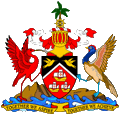
since 1962,
Coat of arms of Trinidad and Tobago,
Source, by: Corel Draw 4
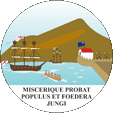
1889–1958,
Badge of Trinidad and Tobago,
Source, by: Flags of the World

1958–1962,
Badge of Trinidad and Tobago,
Source, by: Flags of the World

The national coat of arms was officially awarded by Queen Elizabeth II. on 9th of August in 1963 and, like the flag, was it introduced on 31st of August in 1962 on the occasion of independence. The coat of arms shows black at the top and red at the bottom, divided by a silver chevron. In the black field there are two hummingbirds, they represent the two islands and their natural riches. In the red field there are three caravels, they are Columbus's ships. They represent the sea that separates and connects both islands. Shield holders are a Scarlet Ibis on the left (representing Trinidad) and a Cocorico on the right (representing Tobago). Above the shield is a golden helmet with white and red covers and a white and red bulge. At the top there are gems: a wooden steering wheel and a palm tree. The shield rests on a base depicting an island landscape. At the bottom there is a golden banner with the country's motto: "Toghether we aspire - together we achieve" → "Together we strive - together we are successful". The badge, introduced in 1875, showed a mountainous coastal landscape with a coastal fortification. A flag, a Blue Ensign, flies on the coastal fortifications. A British warship with reefed sails lies in the roadstead in the coastal waters. A rowing boat can be seen in the foreground. The lower part of the disc shows the island's motto on a white surface: "Miscerique probat populus et foedera jungle" → "It has proven successful to mix the peoples and unite them in unity". In 1889 Tobago was placed under the administration of Trinidad and the badge was retained unchanged for Trinidad and Tobago until 1958. The badge was abolished in 1958 and the image of the badge was transferred to an escutcheon. The colony's motto appeared on a golden banner below the escutcheon.
Source:
Die Welt der Flaggen,
Flags of the World,
Flaggen Wappen Hymnen,
Volker Preuß

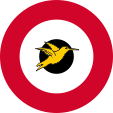
Aircraft Roundel,
Source, by: Wikipedia (EN)

Location:
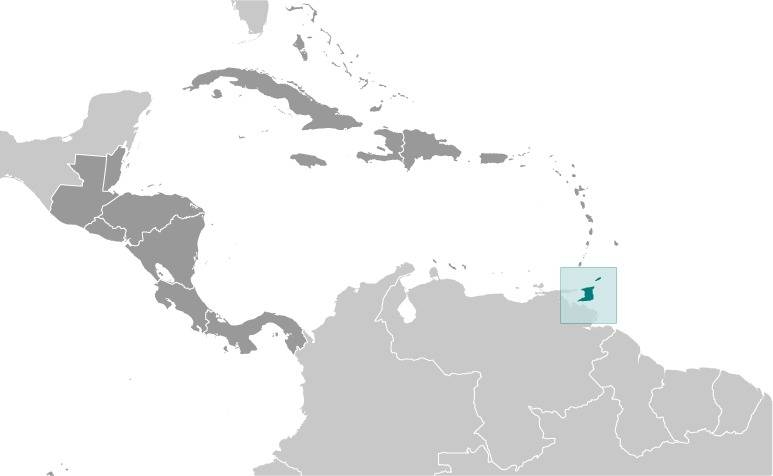
Source: CIA World Factbook
Map of the country:

Source: CIA World Factbook

Area: 1.980 square miles
Inhabitants: 1.500.000 (2021), thereof 35% Indians and other Asians, 34% Afro-Americans, 23% mixed, 1% Chinese and Europeans
Religions: 24% Roman Catholic, 21% Hindu, 13% Protestant, 6% Anglican, 6% Baptist, 6% Muslim, 2% Non-Religious
Density of Population: 758 inh./sq.mi.
Capital: Port of Spain, 49.031 inh. (2011)
official Language: English
other Languages: Patois Creole, Spanish
Currency: 1 Trinidad and Tobago Dollar (TTD, TT$) = 100 Cents
Time Zone: GMT – 4 h
Source:
Wikipedia (DE)

History of Trinidad ← click here
History of Tobago ← click here
1st of January 1899 · Trinidad becomes united with Tobago to the colony of Trinidad and Tobago
1939–1945 · Second World War, the islands become build up to the bigest allied military base in the Caribbean Sea
1958–1962 · Trinidad and Tobago is a part of the Federation of the West Indies
1956 · United Kingdom grants inner self administration
31st of August 1962 · United Kingdom grants independence in the framework of the Commonwealth of Nations, the country becomes a constitutional monarchy under the British monarch as chief of state
1970 · agitations
1972 · state of emergency
1st od August 1976 · Trinidad and Tobago becomes a republic, but remains in the Commonwealth of Nations
1980 · Tobago gets partial inner self administration
1987 · Tobago gets autonomy
Source:
Wikipedia (EN),
World Statesmen,
Volker Preuß

As the Spanish seafarer Christoph Columbus discovered the island in 1498 he named it "Trinidad", because of the three characteristic mountain peaks in the silhouette of the island. Trinidad means Trinity.
Tobago was also discovered by the Spanish seafarer Christoph Columbus in the year 1498. He named it "Bella Forma" (the Wellshaped), by other sources "Isla de la Asunción" (Ascension Island). Only some years later it was named "Isla La Magdalena" (Magdalena Island). Later the island had many names, according to its respective owner. So even "Nieuw Walcheren" or "Neukurland". The French and the British called it "Tobago". This name has its roots in the word Tobacco. Otensibly even that island's name has its roots in Columbus, because he watched that the Cariben smoking Tobacco-Leafs in a Tambaku, and he used this name for the island.
Source:
Handbuch der geographischen Namen,
World Statesmen,
etymonline.com,
Volker Preuß


![]()



























